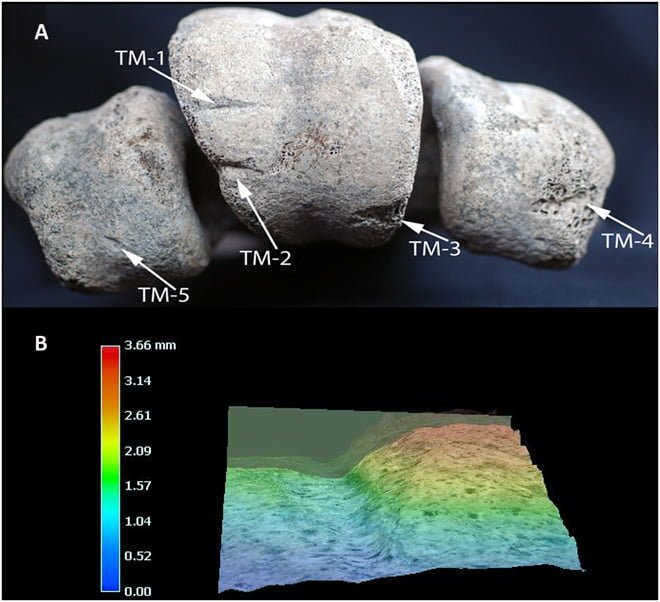Scientists analyzed ancient bird bones which they say indicate that humans lived on Madagascar 6,000 years earlier than previously thought. The bones belong to what was once considered the largest bird in the world.
The findings were published in the journal Science Advances on Sept. 12. A team of scientists from the International Conservation Charity ZSL (Zoological Society of London) found that the ancient bird bones belong to extinct Madagascan elephant birds, scientifically known as Aepyornis and Mullerornis. On those bird bones, scientists found cut marks and depression fractures that are commonly associated with hunting and butchery by early humans.
To confirm this, the team referred to a special technique called radiocarbon dating, which determined the time those birds were killed. The time they estimated based on that technique predated the arrival of early humans to Madagascar.
In previous research, scientists analyzed lemur bones and archaeological artifacts which they say suggested that humans came to Madagascar 2,400 to 4,000 years ago. However, the analysis of the ancient bird bones led them to conclude that humans lived on Madagascar 6,000 years earlier than previously thought. That would mean humans were on the island more than 10,500 years ago. This discovery means these ancient elephant bird bones mark the earliest known presence of humans on Madagascar.
“We already know that Madagascar’s megafauna — elephant birds, hippos, giant tortoises and giant lemurs — became extinct less than 1,000 years ago. There are a number of theories about why this occurred, but the extent of human involvement hasn’t been clear,” lead author Dr. James Hansford from the ZSL’s Institute of Zoology said in a statement. “Our research provides evidence of human activity in Madagascar more than 6,000 years earlier than previously suspected—which demonstrates that a radically different extinction theory is required to understand the huge biodiversity loss that has occurred on the island. Humans seem to have coexisted with elephant birds and other now-extinct species for over 9,000 years, apparently with limited negative impact on biodiversity for most of this period, which offers new insights for conservation today.”
“This new discovery turns our idea of the first human arrivals on its head,” co-author and professor Patricia Wright from Stony Brook University added. “We know that at the end of the Ice Age, when humans were only using stone tools, there were a group of humans that arrived on Madagascar. We do not know the origin of these people and won’t until we find further archaeological evidence, but we know there is no evidence of their genes in modern populations. The question remains—who these people were? And when and why did they disappear?”
The ancient bird bones that were used for this project were initially found in 2008 in the Christmas River in south-central Madagascar. They were found in a fossil “bone bed” that was hiding a lot of ancient animal remains. According to the team, this site could be indicative of a massive kill site, although researchers would need to continue working on the project to confirm that.





